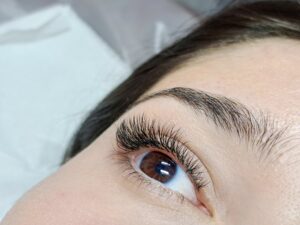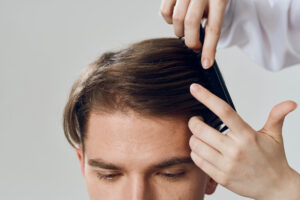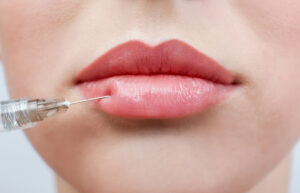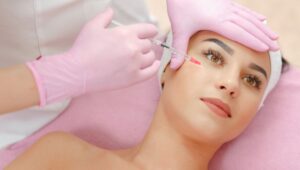This complete guide gives you everything you need to know about Botox injections. In a world where cosmetic treatments are becoming increasingly popular, understanding Botox—the most popular non-surgical cosmetic procedure around—is vital. Whether you’re considering Botox for fine lines, frown lines, excessive sweating or are simply curious about the process, this article is your ultimate guide to Botox.
What are Botox Injections and How Do they Work?
Overview of Botox and Its Cosmetic Applications
Botox is a drug made from a toxin produced by the bacterium Clostridium botulinum. Known in full as botulinum toxin, it has various applications in the cosmetic field. Botox treatment can be used to treat and reduce the appearance of fine lines and wrinkles around the eyes (crow’s feet), between the eyebrows (frown lines) and on the forehead. By blocking certain chemical signals from nerves, Botox can temporarily paralyze facial muscles, leading to the reduction in the appearance of facial wrinkles.
How Botox Injections Operate on Wrinkles and Fine Lines
Injecting Botox into the muscles beneath the wrinkle causes them to relax. When Botox is injected into the treatment area, it blocks the signals from nerves to muscles, causing them to relax and minimizing the appearance of lines and wrinkles. The effect of Botox on the wrinkle or fine line can be seen as it gradually smoothens out after the first treatment.
The Use of Botox for Excessive Sweating and Other Non-cosmetic Treatments
Botox is also approved to treat conditions like excessive sweating, where the Botox inhibits signals to sweat glands, reducing the amount of sweat a person produces. It’s not just about aesthetics; Botox can be used for various non-cosmetic treatments too, providing relief to many.
What to Expect When You Get Botox: From Consultation to Results
Preparing for Your First Botox Treatment
Before you get Botox, it’s crucial to prepare by understanding the procedure. During your Botox consultation, the provider assesses your skin and discusses the number of units to be used per injection site. It is also advised to avoid alcohol and anti-inflammatory drugs before the Botox appointment to reduce the chance of bruise.
What Happens During the Botox Injection Procedure
During the treatment, Botox is typically injected using a very fine needle. The number of injections required can vary depending on the extent of the wrinkles and fine lines. Botox is mostly used on the upper face—for crow’s feet, forehead lines, and frown lines. For a proper result, it’s crucial to not touch the face for 24 hours after having some Botox injected.
Anticipating the Botox Results: Post-Treatment and Aftercare
Individuals start seeing Botox results in 3–7 days with full results observable by two weeks. The effectiveness of Botox varies with the treated area and patient. Botox aftercare involves staying upright, avoiding strenuous activity, and not massaging the area.
Understanding the Cost and Longevity of Botox
The Average cost of Botox and Factors Influencing Price
The cost of Botox is usually based on the number of units used. Factors such as the location of the procedure, the provider’s experience, and the area of treatment can also influence Botox cost. It’s vital to remember that good work isn’t cheap and cheap work isn’t good. Always prioritize quality and safety over cost when it comes to Botox.
How Long Does a Unit of Botox Last: From Injection Site to Longevity
Treatment longevity varies. However, Botox typically lasts between three to four months for most. The effects may last longer with repeated treatments. Regardless of the injection site, the long-term effect of Botox can provide a significant reduction in the appearance of fine lines and wrinkles over time.
Strategies for Maintaining Botox Results and Budgeting for Ongoing Treatments
Since Botox’s effects aren’t permanent, it’s crucial to plan for follow-up treatments. To maintain the appearance of smooth skin, consider scheduling future appointments in advance. This also helps in budgeting, as you’ll know the frequency and cost of Botox treatments upfront.
Examining the Side Effects and Alternatives to Botox
Potential Side Effects of Botox: From Bruising to More Serious Concerns
While Botox has been widely used for decades, it can sometimes cause temporary side effects such as swelling, redness, or bruising at the site of injection. Some people may also experience a mild headache or slight drooping of the eyelid. However, these side effects usually resolve on their own in a short time.
Understanding the Difference Between Botox and Fillers
‘Botox vs Fillers’ is a common theme amongst people considering cosmetic treatments. While Botox relaxes muscles to minimize the appearance of lines and wrinkles, dermal fillers, on the other hand, plump up tissues so that lines and wrinkles disappear or decrease in depth.
Considering Botox Alternatives: From Wrinkle Creams to Dermal Fillers
Apart from Botox, there are other ways to reduce the appearance of wrinkles. These alternatives could be wrinkle creams or other non-surgical treatments like chemical peels and dermal fillers. The choice would be heavily based on individual skin type, expected results, and personal preference.
Deciding if Botox Injections are Right for You: A Perceptive Guide
Know if Botox is Right: Assessing Your Unique Needs
Is Botox right for you? Everyone has unique needs when it comes to their skin. Consider talking to a professional, assessing your skin type, features, and what you hope to achieve before deciding.
Effective Use of Botox for Different Treatment Areas
Botox can be used effectively on various treatment areas. It’s not just for the face, treatments extend to underarm sweating, migraines, and even certain eye muscle conditions. Information is power so understanding how Botox works can help you achieve the desired results.
*Information in this article is not medical advice and may not be factually accurate. It is intended for entertainment purposes only. Consult with a physician before attempting any tips in this blog post and to get the most up to date factual data about any procedure or treatment.














